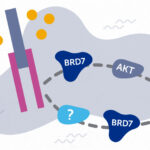Better evaluation needed for BRUEs

Previously known as apparent life-threatening events, brief resolved unexplained events (BRUEs) are episodes marked by choking, paleness, blue spells (cyanosis), and limpness. They tend to occur in previously healthy infants and send worried parents racing to the emergency department (ED). Although gastroesophageal reflux disease (GERD) is frequently implicated in these patients, pediatric gastroenterologists are often not involved in the initial diagnosis or management of patients with BRUE.
In 2016, the American Academy of Pediatrics (AAP) issued clinical practice guidelines for managing BRUEs. In a new study, Daniel Duncan, MD, MPH, Rachel Rosen, MD, MPH, and colleagues in the Aerodigestive Center at Boston Children’s Hospital sought to determine whether hospitalization, testing, diagnosis, and management of suspected GERD decreased since the introduction of these guidelines. They reviewed records for a total of 359 infants with BRUE evaluated at Boston Children’s between June 2015 and May 2016 (before release of the guidelines) and June 2016 and May 2017 (after release).
A dearth of evidence
Duncan, Rosen and the aerodigestive team found that each of the children underwent more than two diagnostic tests, but 89 percent of those tests had negative results that didn’t help contribute to a diagnosis. Only 13 percent of the children had a videofluoroscopic swallow study (VFSS), also known as a modified barium swallow study. Yet 72 percent of these patients had evidence of aspiration during VFSS, making this is the highest yield test of any performed in this population.
GERD was implicated as the cause for hospital admission in 40 percent of patients, yet none of them underwent reflux testing.
What’s more, GERD was implicated as the cause for hospital admission in 40 percent of patients, yet none of them underwent reflux testing. Despite evidence in the literature that GERD is not a significant cause for BRUE episodes, more than one-third of patients were placed on acid -suppression therapy during or following the BRUE admission. And 28 percent of patients were either readmitted or seen in the ED for similar symptoms during follow-up, with costs totaling up to $20,000 per patient.
Low-risk recommendations
The findings , which were published in the May 15, 2019, issue of The Journal of Pediatrics, suggest that BRUE admissions remain common, while their management is both low-yield and costly. “For years, gastroesophageal reflux has been implicated as a cause of these symptoms. With the development of aerodigestive centers, we have now learned that aspiration during swallowing, not gastroesophageal reflux, is the culprit in many of these patients,” says Rosen, who is director of the Aerodigestive Center.
“Also concerning is that these BRUE events are misattributed to reflux instead of to swallow dysfunction,” says Duncan. “As a result, these infants are often inappropriately placed on acid-suppressing medications, which have been associated with worse outcomes in children with aspiration.”
In light of the high costs of care and high rate of readmission among children with BRUE, the researchers believe that the AAP guidelines should recommend the objective assessment of swallowing and feeding interventions, as well as the removal of GERD as a possible explanation for BRUE. These are low-risk changes that could potentially reduce hospitalization and cost. Instead of the current approach, Duncan, Rosen, and their team recommend testing with VFSS and avoiding the use of acid-suppressing medications in these patients.
“If we can decrease recurrence of these scary symptoms by recognizing and treating aspiration in these patients, we can really improve outcomes for infants after BRUE,” says Duncan.
Learn about the Aerodigestive Center.
Related Posts :
-

BRD7 research points to alternative insulin signaling pathway
Bromodomain-containing protein 7 (BRD7) was initially identified as a tumor suppressor, but further research has shown it has a broader role ...
-

When diagnosis is just the first step: The Brain Gene Registry
Through advances in genetic sequencing, many children with rare, unidentified neurodevelopmental disorders are finally having their mysteries solved. But are ...
-

Engineered cartilage could turn the tide for patients with osteoarthritis
About one in seven adults live with degenerative joint disease, also known as osteoarthritis (OA). In recent years, as anterior ...
-

Surgery beats sclerotherapy for rectal prolapse in children ages 5 and older
Rectal prolapse — the protrusion of the lining of a child’s rectum through the anal sphincter — can occur for many ...





